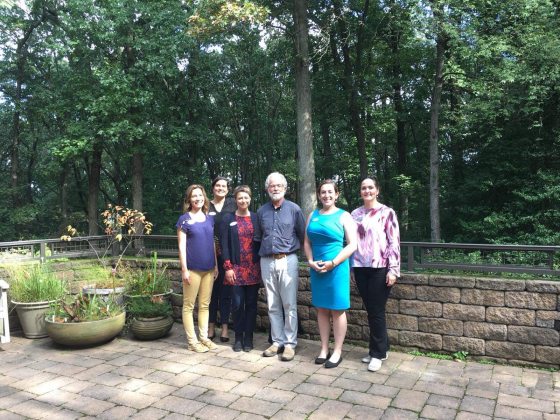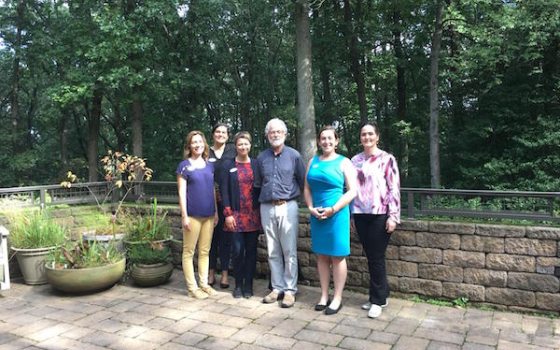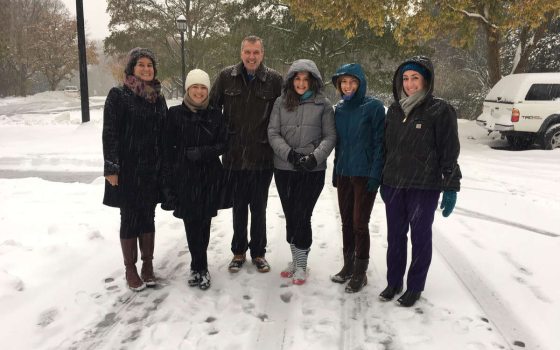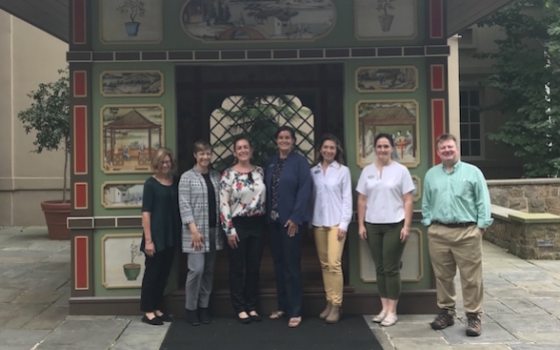As Fellows, the Longwood Fellows Program helps us develop our leadership fluency and understanding of organizational management. As part of the program, we visit gardens with distinct missions that set them apart from others to take part in salons. Our most recent salon was hosted at Jenkins Arboretum & Gardens, which is nestled in the busy Main Line area of the Philadelphia metro region. We arrived at the LEED Gold Certified John J. Willaman Education Center, which was built in 2008 and was intentionally designed to make it seem like it had been there for years. Tucked into the mature woodland forest, the building was a strategic project to elevate the garden’s public awareness and provide a natural yet formal gateway into the landscape beyond. Our salon hosts were Harold Sweetman, Executive Director, and Stephanie Kuniholm, Director of External Relations and member of the Society of Fellows. Our meeting took place in the boardroom, which features floor to ceiling windows that provided a vista into the garden, making us feel like we were in the tree canopy.
Established in 1968, Jenkins Arboretum & Gardens was founded with the intention of making it a public arboretum. It was fortunate to have the opportunity many gardens of the Philadelphia region never had—to be built from the ground up. The site was challenging—pitched on steep inclines with acidic soil and lots of shale—but the new organization was up to the challenge. What started as a few small plants when the arboretum’s doors first opened to the public has now become a densely planted woodland. Jenkins showcases both native and non-native plants, including a world class collection of rhododendrons and azaleas that thrive in the acidic soil. Plants from southeast Pennsylvania are displayed next to specimen plants from around the world. The garden now has nearly 1.2 miles of woodland paths that allow guests to explore the arboretum. The garden strives to be a model for the appreciation and stewardship of nature, and inspires and educates the public about the importance and beauty of the natural world.
We joined Harold and Stephanie to talk about selecting and developing a board. Nonprofit public gardens rely on their boards to make considered, long-range decisions that impact a variety of governance-related issues, such as strategic plans, financial oversight, and other large initiatives. Board members help develop guiding philosophies often found in the mission statement. Boards can be virtually any size; however, 3 is typically the minimum number of members. As we discussed how one cultivates a board, Harold emphasized how important it is for a garden to share its unique character with potential board members. By sharing the garden’s story, potential board members have a deeper understanding of what makes it unique and special.

As we talked with Harold, we saw the passion he has brought to his leadership position. He has served as Executive Director for 32 years and has seen the garden grow, much of it by his own hand. Walking the wooded path, Harold pointed out the rhododendrons he planted during his early years as the only paid employee. Today, the garden supports eight paid positions. Harold continually strives to look at the big picture, growing the garden in a sustainable way.
When Harold retires next spring, the Jenkins staff and the entire community will no doubt feel the loss. But through the work of the Jenkins board, the mission of preserving natural tranquil woodlands for community enjoyment will surely continue.


